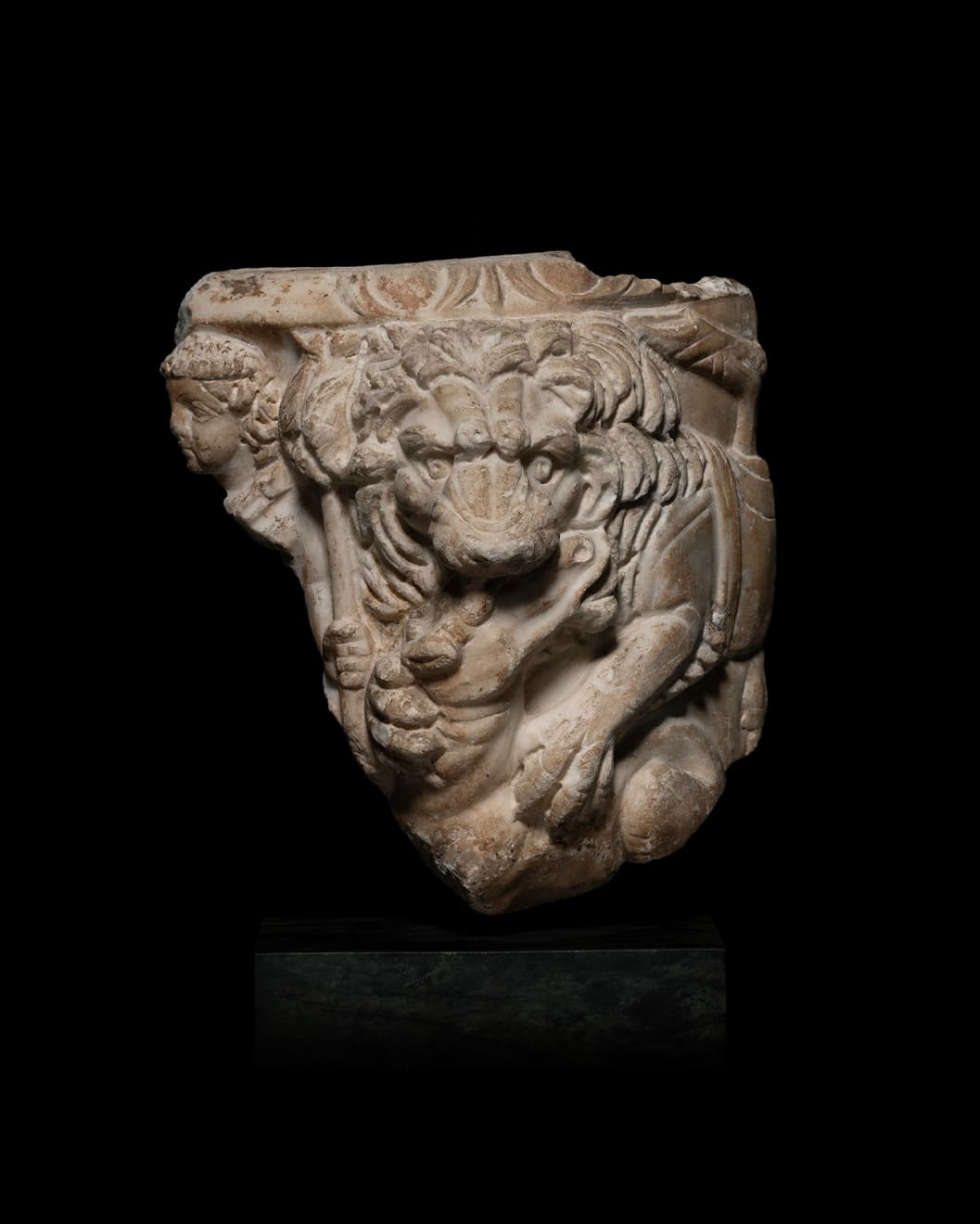Roman
A Roman marble 'Lion Hunt' sarcophagus fragment, Imperial, circa 3rd century AD
Marble
Height: 30.5 cm
Further images
From a lenos, a tub-shaped sarcophagus. The hunt scene depicts a powerful lion, framed by a luxuriant mane, staring out. In his mouth he crushes the back-twisted head of a...
From a lenos, a tub-shaped sarcophagus. The hunt scene depicts a powerful lion, framed by a luxuriant mane, staring out. In his mouth he crushes the back-twisted head of a horse, whose neck he gouges with the claws of his left foreleg. The lion wears a strap around his torso. To the left stands a man, the lion trainer/handler, holding a staff.
Provenance
Leo Mildenberg (1913 - 2001) Collection, Zurich, Switzerland, acquired between the 1970s - 90sWith Antiqua Inc., California, Ancient Art and Numismatics, catalogue XIII, p. 31, no. A25, 1999
With Antiqua Inc., California, Ancient Art and Numismatics, catalogue XIII, p. 31, no. LM12, 2005Private collection, New England, acquired from the above, 15 June 2005
Literature
Lion-hunt sarcophagi rose to popularity in the 3rd century AD. In Rome, the activity of hunting was a pastime traditionally associated with the emperor and aristocracy. As such, hunting imagery in Roman art became symbolic of masculinity and power, expressions of which were important for the self-representation of status-conscious citizens. Lion hunting in particular was an activity associated with the emperor, such imagery therefore was used to reflect the social ambition of the deceased.There is a similar example in the Vatican Museums, Rome and also the Museum of Fine Arts, Boston, accession no. 1975.359. For further discussion and other related examples see J. Stroszeck, Löwen-Sarkophage. Sarkophage mit Löwenkopfen, schreitende Löwen und Löwen-kampfgruppen, Berlin, 1988.







